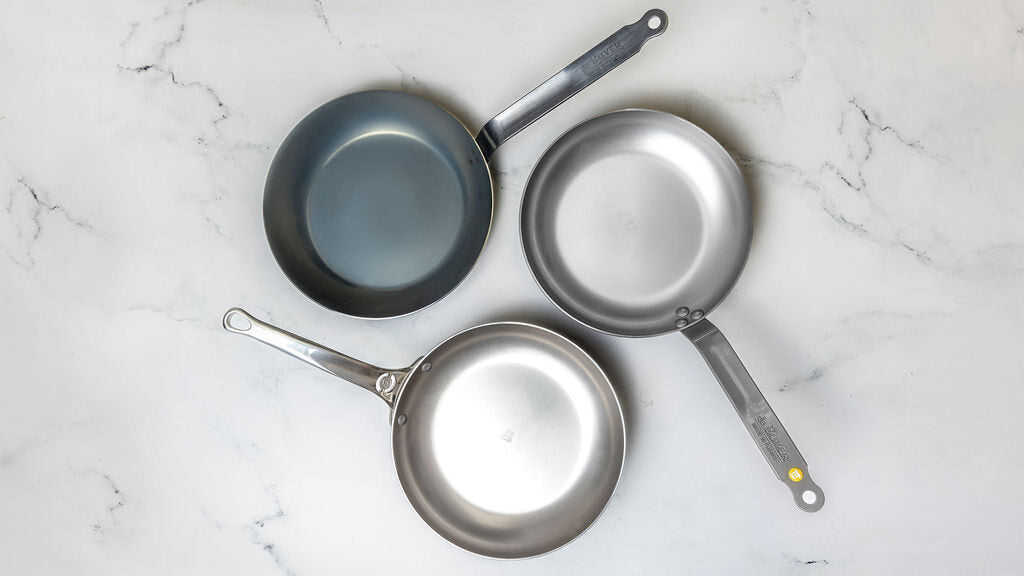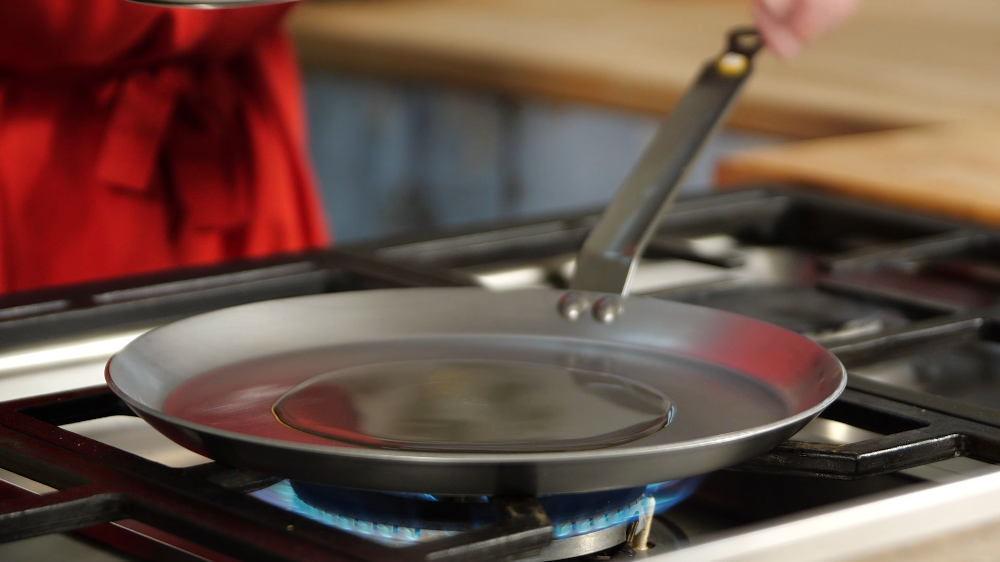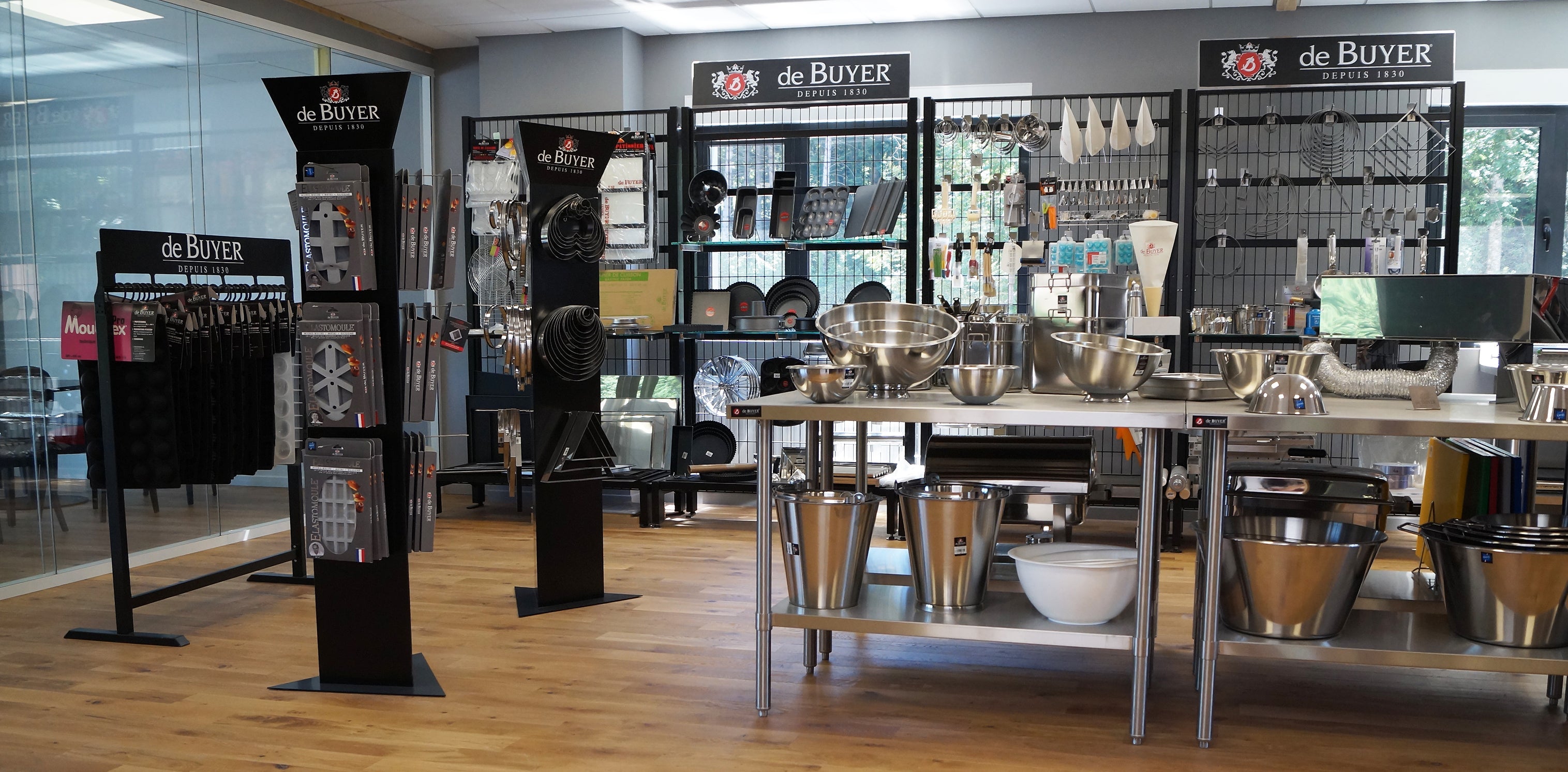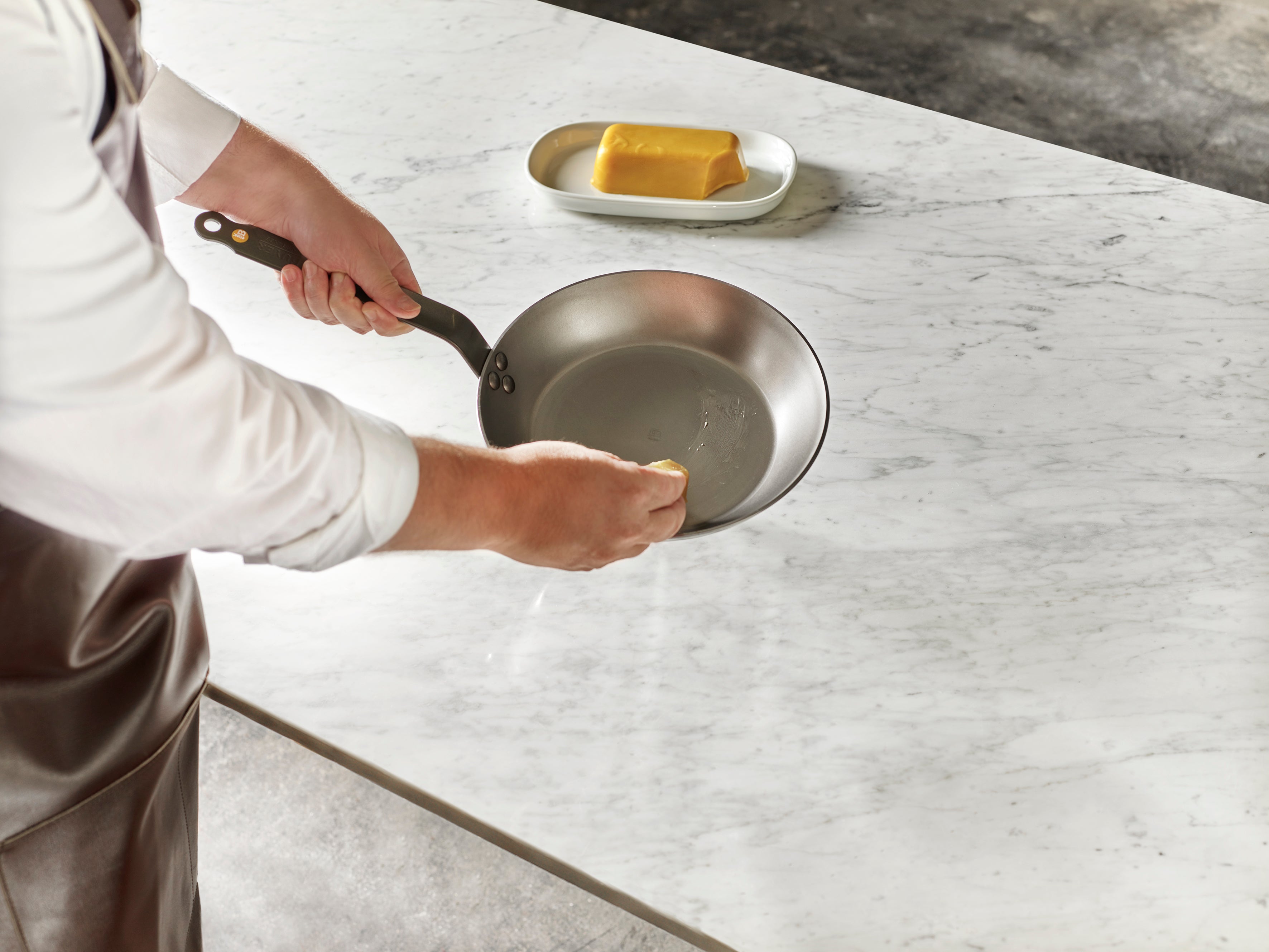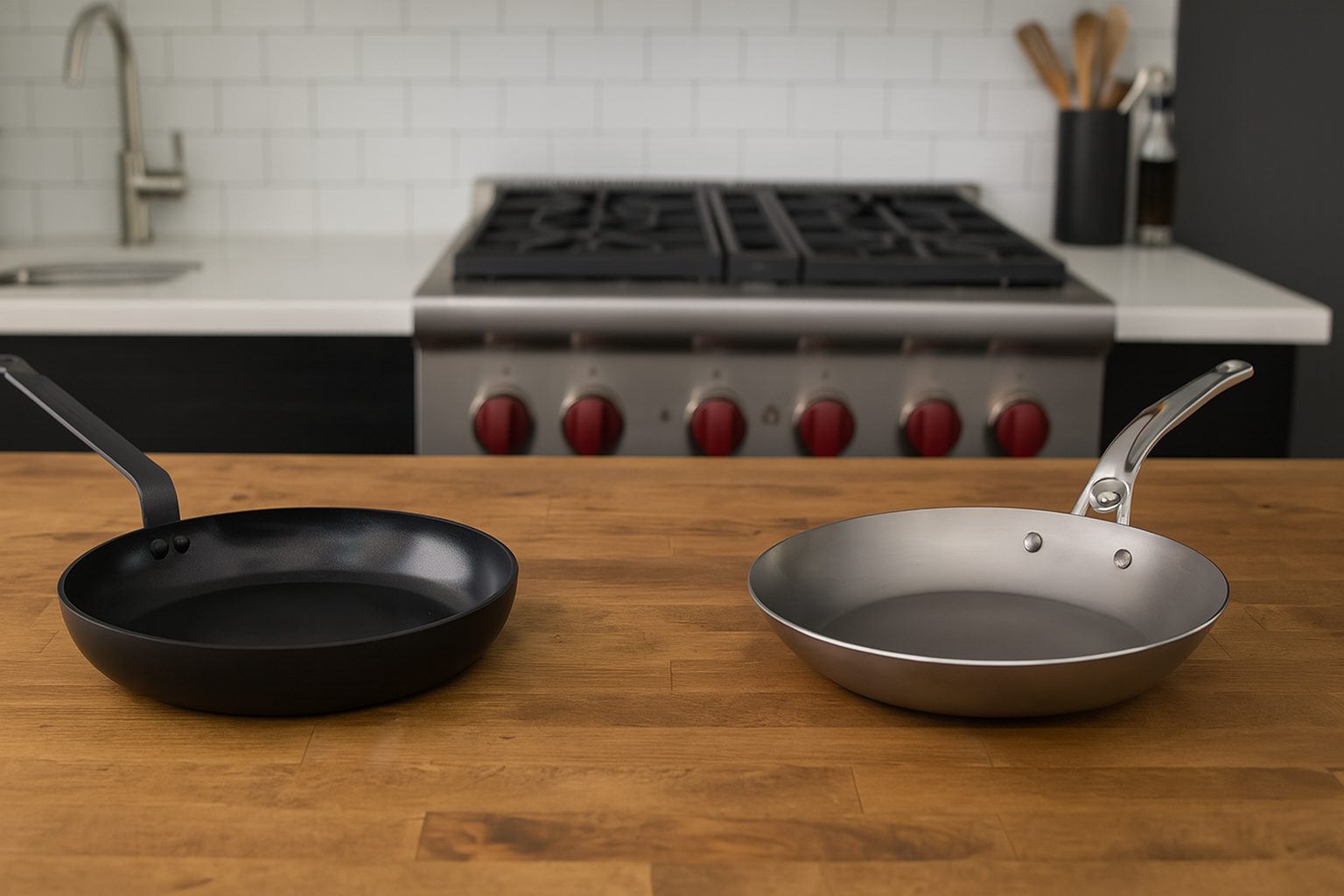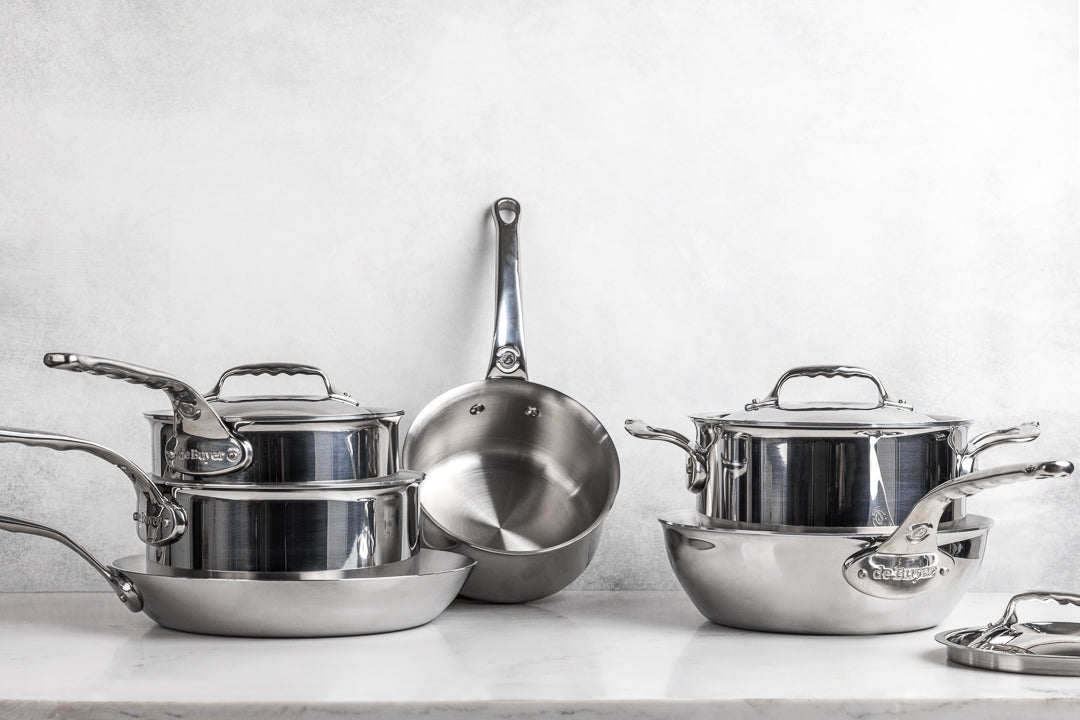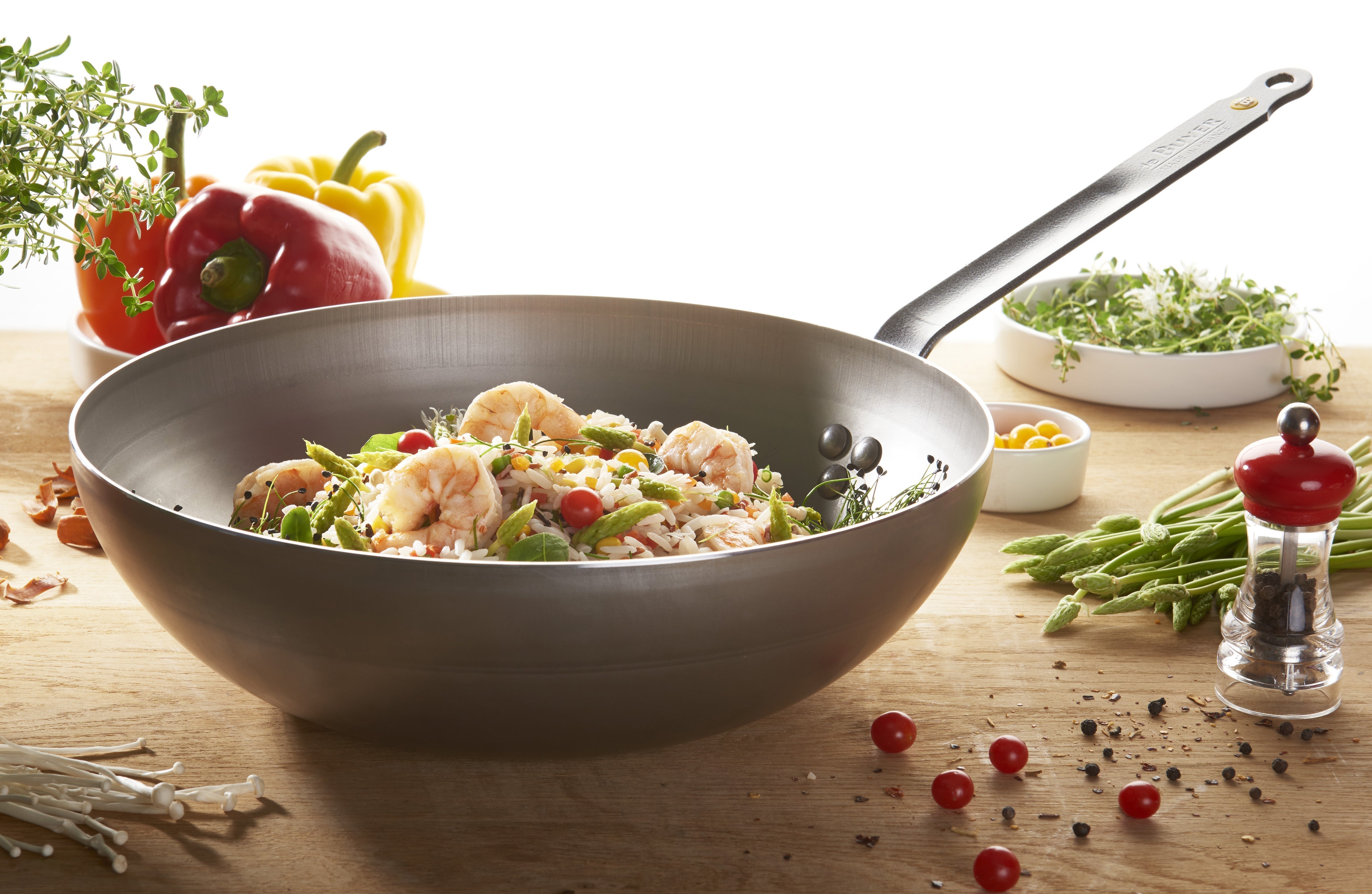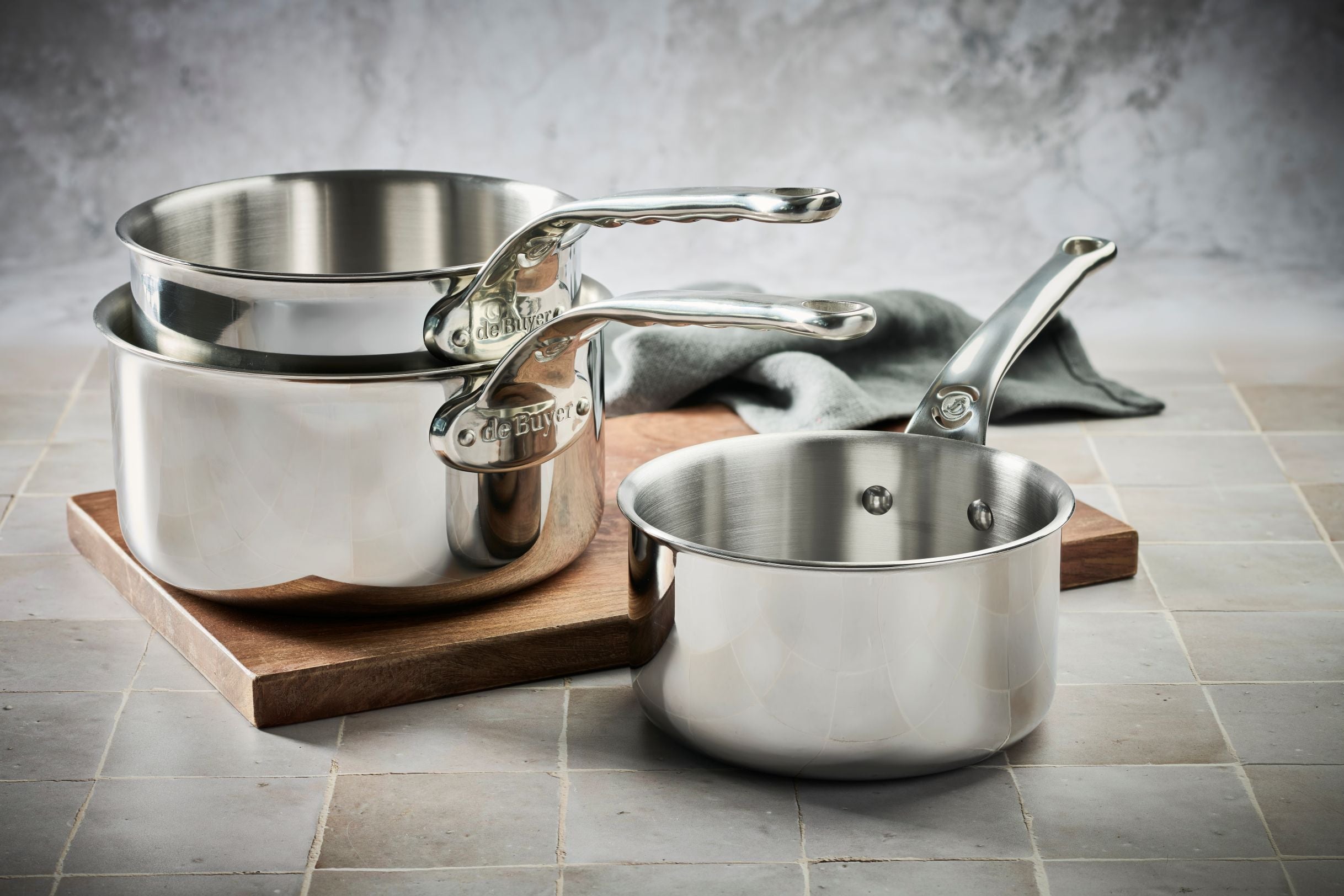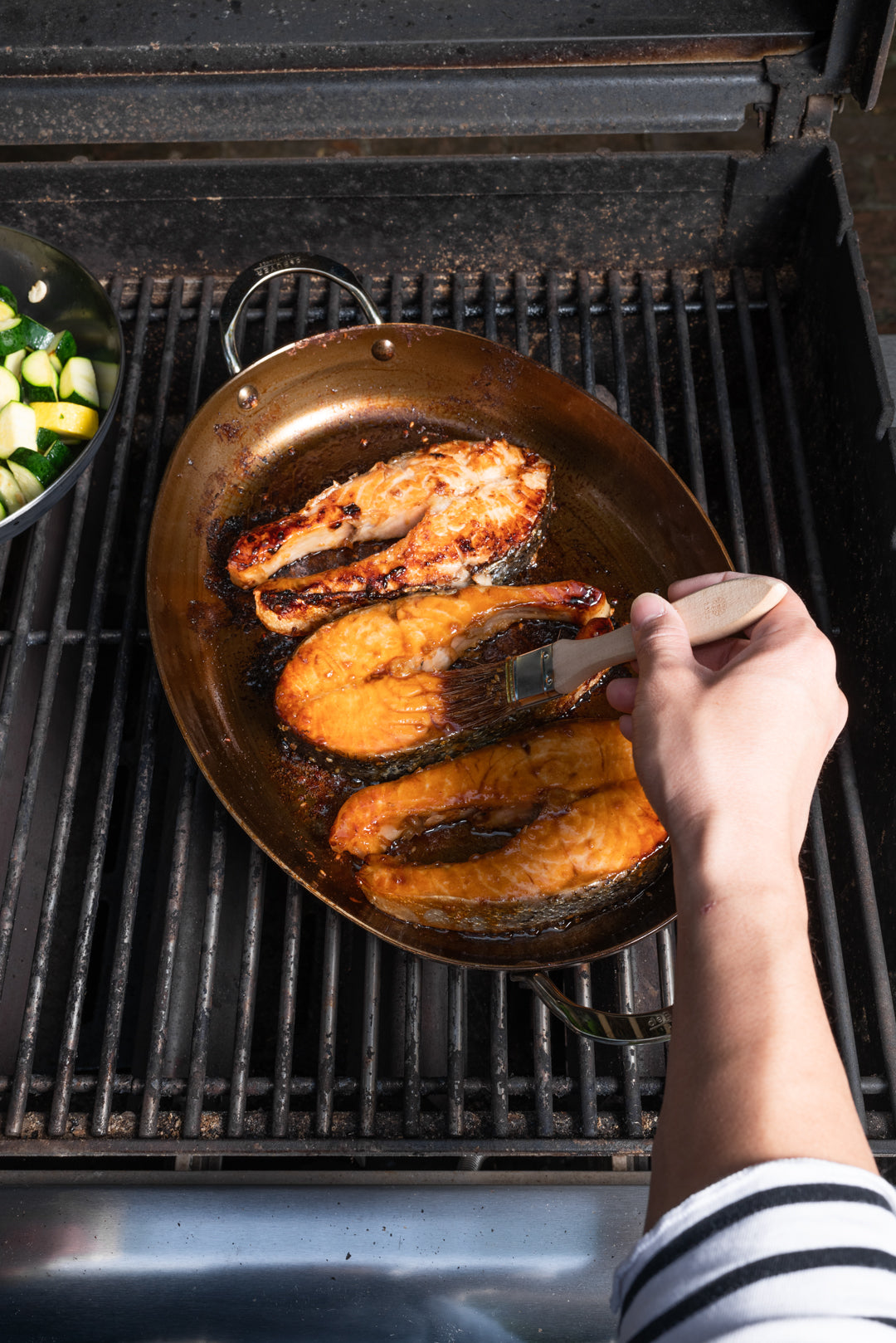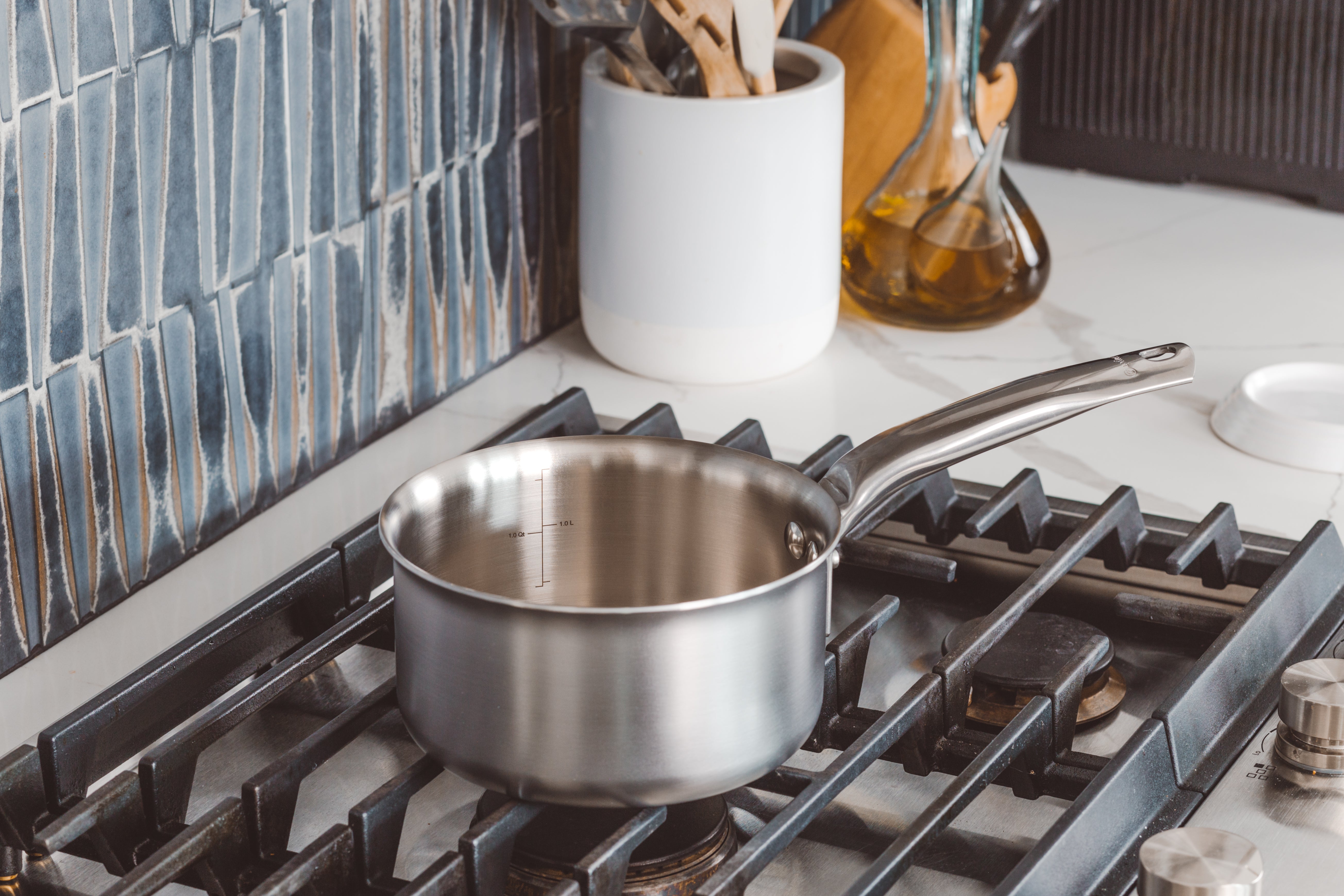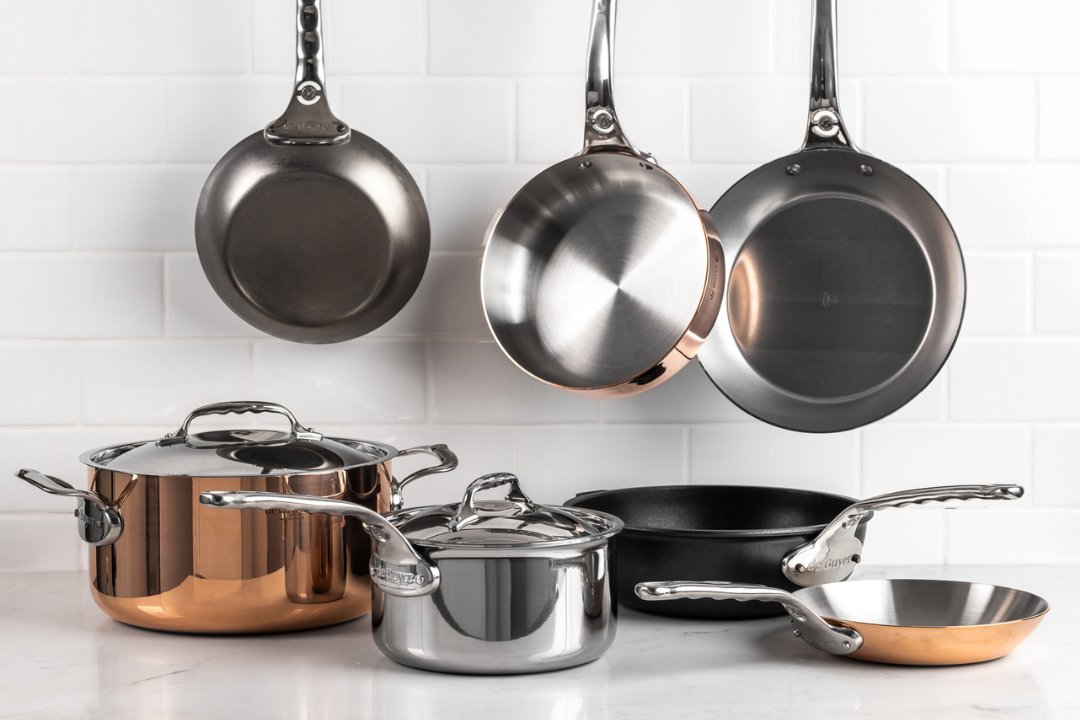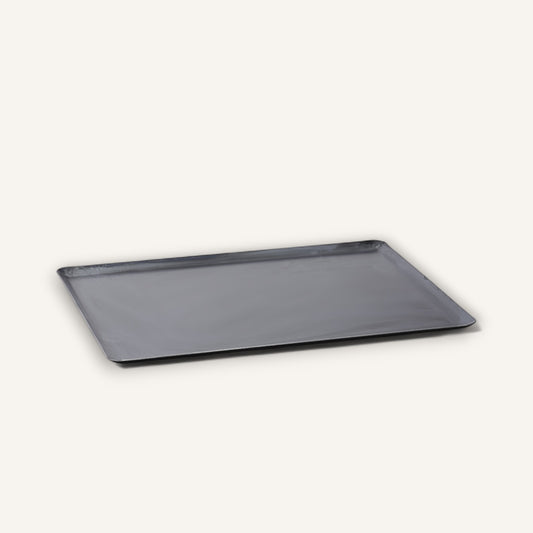Frying pans are a must-have, multifunctional cookware item. They gently cook delicate foods like spatchcock birds, fritters, and more. Choosing a new pan for your kitchen requires evaluating its unique features and benefits. Your kitchen needs more than poor-quality aluminum frying pans.
In this article, we’ll help you understand the different frying pan types and materials and how to choose the best pan for your cooking style.
The Basics of Frying Pans
A frying pan (also known as a skillet) has a round shape, sloped sides, a long handle, and a lightweight design. Its wide rim extends beyond the cooking surface, so liquids evaporate efficiently and foods are easy to toss. Frying pans can be used for various cooking techniques, such as sautéing, frying, and searing.
Beyond these basic qualifications, frying pans can take on many shapes, materials, and sizes.
Different Frying Pan Types and Their Uses
Let’s dive into a comprehensive breakdown of the different frying pan types based on their design and intended uses.
Skillets (Traditional Frying Pans)
As mentioned, a skillet and a frying pan are the same thing. Some professionals and cookware providers may refer to cast iron frying pans as skillets. The classic frying pan is a kitchen jack of all trades.
Frying pans can get a good sear on your morning sausages, fry up some fajitas for lunch, and finish things off with mushrooms and steak for dinner.
Sauté Pans
Some cookware companies refer to sauté pans and frying pans interchangeably. Avoid purchasing from these groups because sauté pans are a distinct type of frying pan with specific best uses.
Sauté pans, like skillets, are used on the stovetop but are deeper with straight sides to prevent spills and hold more ingredients. They feature a long handle and may come with a side handle for added support. Sauté pans may come with a lid which aids in cooking sauces and retaining moisture.
Woks
Woks may look like pots in their own category, but they are technically a type of frying pan. A wok is a thin-walled, bowl-shaped pan with handles commonly used in Chinese cooking. Its round bottom concentrates heat, cooking food quickly with minimal oil.
Cooked food can be moved up the sloping sides to stay warm while other ingredients cook at the base—it's like a large, bowl-like frying pan. Woks were originally designed to conserve scarce fuel. They are traditionally used over very high heat, like an open flame, and are the ideal stir-frying tool.
Nonstick Frying Pans
A nonstick pan is any pan designed with built-in nonstick properties. This typically comes in the form of a coating. Nonstick frying pans make for easy cleaning and are excellent at cooking delicate items like eggs and fish.
However, some nonstick coatings offer a trade-off in heat retention and longevity. Additionally, some nonstick coatings are toxic to people, so it’s vital to read the fine print.
Griddle Pans
Griddle pans provide a large, flat cooking surface with short vertical sides. They also have two handles on each end, which makes it easier to maneuver the large pan.
These pans are perfect for making pancakes, grilling sandwiches, and cooking large batches of food. Unlike your standard skillet or wok, they can’t be agitated or shaken to promote even browning. You’ll need a spatula or other utensil.
Crepe Pans
These pans are designed for their namesake: cooking crepes. The low, sloped sides promote effortless flipping, and the lightweight makes it easy to pick up the pan and swirl batter along its base.
Crepe pans are also great for making pancakes, french toast, and eggs.
Common Frying Pan Materials and Their Benefits
The different materials commonly used in frying pans offer unique benefits and advantages.
Cast Iron
Cast iron frying pans offer excellent heat retention and are ideal for searing, frying, and baking. They are also highly durable, though they are one of the heaviest options. This weight slows their heat response compared to other materials. This is something to take into account when considering your requirements for a frying pan.
Like some other materials, cast iron skillets require seasoning before use, which provides natural nonstick properties. Proper maintenance is essential, as cast iron, including enameled cast iron, is not dishwasher-safe. These pans cannot be used to cook highly acidic foods.
Carbon Steel
Carbon steel frying pans blend the best of stainless steel and cast iron. They are responsive like stainless steel and have cast iron's natural nonstick properties. Lighter than cast iron, carbon steel is easier to handle but still requires seasoning to prevent rust and build a nonstick surface.
When seasoning a de Buyer carbon steel pan, remove the beeswax coating and dry the pan. Heat a small amount of neutral oil, rub it with a towel, and allow the oil to smoke off.
For Mineral B PRO and Blue Carbon Steel pans, you can also bake the oiled pan at 450°F for an hour. Note that Mineral B pans have epoxy-coated handles and are not oven-safe, so stick to stovetop seasoning. Always let the frying pan cool fully before use.
These frying pans' quick heating and ability to develop a nonstick layer when seasoned make them versatile for high-heat cooking.
Stainless Steel
Stainless steel frying pans are a classic material choice. Their durability and resistance to rust and corrosion are enough to make them chef favorites. Stainless steel pans are typically constructed with either 100% stainless steel, aluminum, or a mix of stainless steel, chromium, and nickel. These designs create even heat distribution that’s truly impressive.
de Buyer offers stainless steel frying pans in 3-ply and 5-ply options. The 3-ply cookware features 18/10 stainless steel, made with 18% chromium and 10% nickel, while the 5-ply cookware is constructed entirely of stainless steel. The construction and quality of frying pans make them a reliable choice.
Nonstick Coated Pans
As mentioned, nonstick cookware offers convenience and easy food release. Pre-2014, some nonstick cookware posed health risks due to toxic chemicals like PFOA, but modern alternatives prioritize safety.
Alternatively, carbon steel pans are considered a nonstick option when seasoned correctly. They're lightweight, heat quickly, and are non-toxic. Choosing PFOA-free nonstick cookware ensures a healthier cooking experience.
Copper
Copper cookware delivers exceptional performance but comes at a premium price and requires careful maintenance, including handwashing. These frying pans have superior heat conductivity, allowing for precise temperature control, and they are often lined with stainless steel for durability. Copper is fantastic for cooking delicate foods but has the power and durability for heavy-duty frying.
de Buyer's Prima Matera and Inocuivre frying pans are crafted from 90% copper with a 10% stainless steel interior. They blend copper's superior heat conductivity with stainless steel's protection against copper exposure.
Prima Matera stands out with its compatibility with all cooktops, including induction, thanks to a magnetic stainless-steel base. This makes it perfect for precise cooking, such as delicate sauces and searing. The Inocuivre line, while not induction-compatible, offers elegant brass or iron handles.
Enamel-Coated Cast Iron
Enameled cast iron features a coating of enamel which is fused porcelain or glass. This creates a smooth, non-porous, and non-reactive cooking surface. Enamel-coated cast iron combines the benefits of cast iron with an enamel coating that makes the pan easier to maintain and prevents rust without seasoning.
You do need to be very careful not to scratch the enamel, which can sometimes be challenging to manage with a frying pan. However, enamel cast iron Dutch ovens are popular choices for this cookware item.
Choosing the Right Frying Pan for Your Cooking Style
Choosing the right frying pan is based on individual cooking preferences and needs. Consider the following factors:
-
Heat Retention Needs: If precise heat control is essential, then materials like copper and cast iron are ideal.
-
Type of Cooking: If you're often making sauces, then a sauté pan is a must-have. If you're flash-cooking proteins, then a wok would be ideal. If you're searing, scrambling, and shallow frying on the regular, then a standard skillet will be your best bet.
-
Maintenance Requirements: Nonstick pans and stainless steel may be best for those who prefer low-maintenance pans. Remember that any frying pan, regardless of its maintenance requirements, will perform best when you take good care of it.
-
Budget Considerations: Different materials come at different price points. Those without a budget or in high-performance kitchens may prefer copper frying pans. Those who wish to balance quality with budget may prefer a carbon steel option.
Find the Perfect Frying Pan for Your Kitchen
It’s important to choose the right frying pan for different cooking tasks. Explore de Buyer’s high-quality frying pans and invest in quality cookware to enhance cooking results.
Our collection of premium frying pans and skillets showcase our commitment to quality and performance. Experience the de Buyer difference today.
